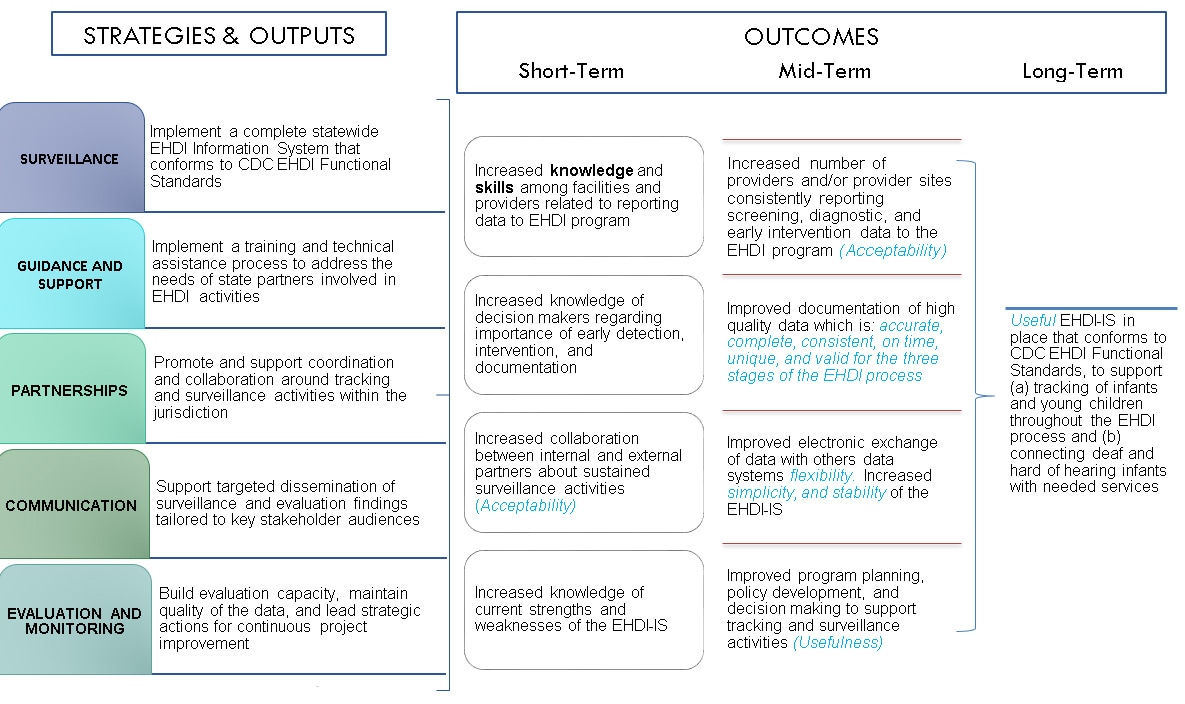EHDI Guidance Manual – Chapter 6: Flow Chart Text Version
Enhancing EHDI-IS Performance with Logic Models
Inputs: Infrastructure, Funding, Staff, Guidance and Support, Stakeholders, Information System
Text version
Logic models help enhance the performance of EHDI information systems. Strategies and outputs contribute to outcomes, from short term to long term.
Strategies can be divided into five types:
- Surveillance could involve implementing a statewide EHDI information system that conforms to the Functional Standards.
- Guidance and Support includes training and technical assistance to help state partners.
- Partnerships in turn support coordination among all those doing tracking and surveillance.
- Communication assures that usable findings are shared among partner organizations.
- Evaluation and monitoring done well ensure quality data and continuous project improvement.
All these lead to outcomes, which can be short-term, mid-term and long-term.
Short-term outcomes include increased knowledge about the strengths and weakness of EHDI and the importance of reporting data. Increased collaboration could also be a short-term outcome.
Mid-term outcomes include actual increases in the number of care providers reporting data to EHDI, with smoother electronic exchange and better quality. Better planning can also be a mid-term outcome.
The main long-term outcome for EHDI information system development is a system that conforms to CDC EHDI Functional Standards and helps connect deaf and hard of hearing children to services they need.
